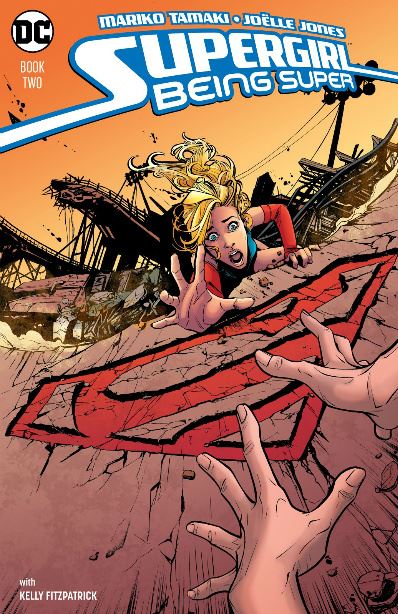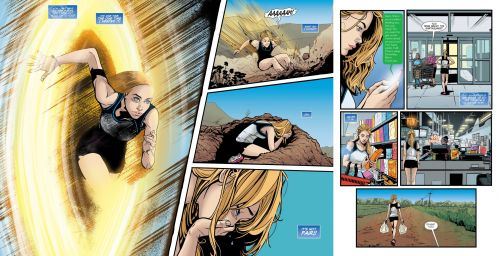Supergirl: Being Super #2 Review
By Zak Edwards
August 7, 2017 - 09:03
DC Comics
Writer(s): Mariko Tamaki
Artist(s): Joëlle Jones
Colourist(s): Kelly Fitzpatrick
Letterer(s): Saida Temofonte
Last time I reviewed Supergirl: Being Super (a regrettably long, long time ago), I praised the series’ opener for its strong characters and willingness to ground the superhero origin story not in action, but in conversation. I also worried about the series’ borrowing too heavily from the Superman origin, putting many of the same building blocks of
 |
| Supergirl: Being Super #2. Cover by Joëlle Jones & Kelly Fitzpatrick. |
It is in this idea of grief as sad and mundane instead of angry and explosive that marks this story as a marked and welcome departure
In fact, Kara uses her powers only three times this issue, and they are all related to her grief. After failing to save her friend, Kara simply runs too fast, creating a pile of dirt, and punches the earth in frustration. Her powers aren't putting people through buildings. She seems to only have a partial grasp of what she can do. They become awkward emotional moments that are perfect for the teenage Kara here.
At well over 50 pages, Tamaki and Jones also have the space for strong character work that doesn’t become pages and pages of speech bubbles. Every scene is given space to breathe and say what it needs to say. Thanks once again to Jones’ pencils, everything looks and feels perfectly mundane and otherworldly when necessary. When Kara runs, for example, the page gradually grows more and more intense, more alienating from the grounded aesthetic. On the very next page, Kara is standing in a supermarket, the full weight of the real world given in full detail. To switch between these so seamlessly is not only an artistic feat, Tamaki’s story depends on Kara’s social world and inner secret messily coexisting. The mundane and the supernatural to break into each other distinctly and it only enhances Tamaki's themes of "trying to keep it together as your world changes."
Kara’s dream sequences are another perfect example. Surreal and disturbing thanks in part to colourist Kelly Fitzpatrick switching up the palette, the dreams are accentuated by the rapid return to a more mundane feel.
 |
| Joëlle Jones & Kelly Fitzpatrick perfectly blend the superhuman and the mundane. |
The actual plot surrounds the mystery of the earthquake and makes slow steps forward this issue. A suspicious faculty member at Kara’s high school is introduced more fully and Kara’s own grief forces her to remember her departure from
Related Articles:
Review: Supergirl #14
Supergirl #20
Review: Supergirl #13
Review: Supergirl Annual #1
Supergirl: Being Super #4 Review
Supergirl: Being Super #2 Review
Supergirl #11 Review
Supergirl #10 Review
Review: Supergirl #9
Review: Supergirl Being Super #3
